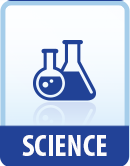|
This section contains 322 words (approx. 2 pages at 300 words per page) |
The space shuttle has a forward reaction control system (RCS) located in the nose of the vehicle and an aft RCS located in the right and left pods at the rear of the shuttle. These reaction control engines can be used for 100 missions and can sustain 20,000 starts and 12,800 seconds of cumulative firing. The engines can be fired in a steady-state thrusting mode of 1 to 150 seconds, or in pulse mode with a minimum impulse thrusting time of 0.08 seconds. The space shuttle RCS is fueled by monomethyl hydrazine with a nitrogen tetroxide oxidizer.
The RCS provides the thrust for attitude maneuvers—pitch, yaw, and roll—and for small velocity changes along the orbiter axis. After the main engines cut off about 8 minutes after launch, the reaction control system is used to move the orbiter away from the external fuel tank when the tank separates from the shuttle. Before the space shuttle returns to Earth, the RCS thrusters are used to put the orbiter in appropriate attitude to reenter the Earth's atmosphere (this is called the entry interface attitude). Remaining fuel in the forward RCS is then dumped.
If the Orbital Maneuvering System engines fail, the aft RCS thrusters can be used to complete the shuttle's deorbit maneuver. From an entry interface at 400,000 feet (121,920 meters), the after RCS thrusters control roll, pitch, and yaw. The orbiter's ailerons become effective at a dynamic pressure of 10 pounds per square foot and the aft RCS roll jets are deactivated at that point.
Reaction Control Systems are also employed on satellites and on the upper stages of unmanned rockets. They fulfill a similar role to that described earlier for the space shuttle, assisting in delivering payloads to the required orbit and achieving the appropriate attitude. Aerojet is one of the major companies providing RCS systems commercially for space applications.
See Also
Guidance and Control Systems (Volume 3);; Inertial Measurement Units (Volume 3).
Internet Resources
|
This section contains 322 words (approx. 2 pages at 300 words per page) |


